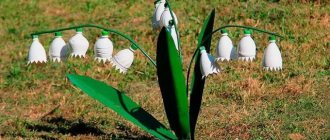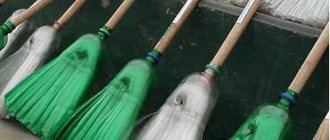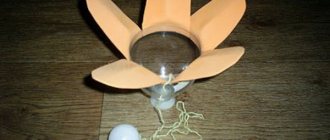We will do it the same way or as you need https://salim-rai.ru
left by Salim Rai, date 2016-03-22 16:59:36
Your pontoon projects are interesting. I want you to see how I made a pontoon out of four floats from Yantar catamarans. https://zhivem-ne-zrja.ru/sdelal-sam/ponton-svoimi-rukami.html
left by Alexander, date 2017-01-12 18:18:24
A pontoon (French pontoon) is a non-self-propelled vessel, a means of supporting weights on the water, with or without a deck. Durable and at the same time quite lightweight structures.
Pontoons can be reinforced concrete, metal, plastic, inflatable and others. They are used as floating supports for bridges, ferries, and berths.
Pontoons find their application not only in industry, but are also actively used by ordinary consumers.
Modular polyethylene pontoons
The best option is floating plastic structures, the elements of which are connected to each other by special fastenings through holes around the perimeter. Such pontoons do not require any special maintenance and are not affected by river or sea water or ice. If necessary, they are easy to assemble, dismantle and install in another place. Such plastic structures are made from low-density polyethylene (HDPE) with the addition of special compounds against exposure to direct sunlight and salt water.
When installing piers, moorings, floating platforms, additional accessories - handrails, gangways, bollards and others. Everyone can improve their harbor or pier the way they want.
Today you can buy a wide variety of composite plastic blocks (modules) for pontoons to suit every taste and budget.
But if buying a ready-made plastic pontoon is not part of your plans, then you can try making a pontoon with your own hands . More on this later..
Tire pier
The pier, located on supports made of car tires, is a durable structure, the construction of which does not require labor-intensive operations of screwing or driving metal piles.
I have had a pier with supports made from truck tires for 8 years. The wheels were secured to each other with stainless steel bolts and wide washers. Sand was poured inside, because it fills all the cavities inside the tires, and the structure becomes monumental. A year later I added sand, because over time it becomes compacted and washed out.
And here is the pier structure that user Alextr61 built after considering all possible options.
It is based on heavy tires from a 40-ton BelAZ vehicle. The author of the design additionally secured the already massive tires with galvanized pipes and covered them with stones. This is the pier he ended up with.
Pontoon made of plastic barrels
The strength of the simplest structure on barrels (for example, a raft) is achieved using a supporting frame using elements that will provide diagonal, longitudinal and transverse rigidity of the structure.
The frame of such a pontoon can be made of steel, aluminum, wood, or plastic.
On the basis of such a pontoon from plastic barrels, you can build a pier for fishing or diving. By adding certain accessories, you can make a raft with sides or even a catamaran.
Good stability on the water allows you to use the pontoon raft as a mobile vehicle for recreation on the water. You can easily install a small outboard motor on a self-propelled pontoon.
Correct dimensions and drawing
They are a separate discussion, because the weight, capacity, carrying capacity and stability of a small vessel on the water depend on the size. If we write about recommendations, they are as follows:
Side height. The optimal value is 500 mm, but no one prohibits a slight change up or down. Length. This parameter depends on how many people will be in the boat at the same time. If the craft is designed for one person, then a length of 1800-2500 mm is enough. For a duet of “seafarers”, 3000 mm is needed, for 3-5 people 3500-4000 mm is enough. The latest design can accommodate six people, but in this case the question is different - the comfort of such a large company. Width. Here the recommended value is 1000-1500 mm, however, it must be taken into account that the maximum figure will significantly reduce maneuverability, but will make the vessel more stable
You need to take into account the weight of people, the potential cargo that will be transported on the boat, and the length of the craft.
Based on the recommended (or chosen by the builder) dimensions, it is necessary to make a drawing. If the master is not good at drawing up such diagrams, it is better to stick to ready-made, proven sketches that are easy to find on the Internet: just enter just two words into the search engine - “boat drawing”, and then switch to “Pictures”.
Foam pontoon
It is possible to construct a pontoon from foam plastic. A frame is made from boards, and two “skis” are made from dense foam plastic (penoplex). This is one of the most successful designs for a motor raft. Moreover, it is easy to operate.
Another option is to make a wooden raft and cover it with foam on the bottom.
Repair
For boats that you have built, your best option is to do the repair work yourself. You should first inspect the boat, find the cause (hole, etc.) and be sure to correct the existing defect.
You can repair the hole with pieces of boards, after degreasing the surface and gluing a new piece of wood. If the problem is more serious, then it would be best to contact a specialist who can carry out professional repair work.
Thus, now you know how to make a boat yourself and repair it at home.
Pontoon from other containers
You can make pontoon floats from various plastic sealed containers. Plastic cans, cubes, barrels, plastic boxes filled with polystyrene foam and polyurethane foam, and so on are used. They are more difficult to attach, but you can achieve a high landing of the raft (pontoon) above the water. You can also make a pontoon from empty sealed metal barrels.
There are also homemade pontoons made from plastic pipes.
Cabin boat
If other types of vessels are successful, then you can begin more serious shipbuilding. To build even a small version, you need to have a large area in reserve, protected from the sun and rain.
You will have to build using several types of materials; you must call friends or a neighbor for help. The highlighted photos and drawings of how to build a boat with a cabin with your own hands will help in the implementation of the project
It is unlikely that a homemade product will withstand high water, but for a summer cottage and fishing in the rain it will definitely do. For inspiration, you can look at alternative models:
- Doerak Sneek.
- UZOLA.
- Amadeus.
Drawings and diagrams of how to make a boat with your own hands can be found in the public domain. It is impossible to say that it will be cheap and fast.
Wooden pontoons
Parts for the pontoons are cut out using a cardboard pattern that resembles a cone when unwrapped; plywood impregnated with drying oil is easily bent. It is used to cover a frame already built from slats .
The skin and deck are made from the same plywood, or thin boards, positioned so that the distance between parallel pontoons is 1 meter. The propeller drive of the catamaran is made from bicycle parts. Bicycle wheels are also suitable for paddle wheels, preferably three-wheeled ones for children. The seat can also be constructed from plywood, slats, and boards. 4-6 door handles can be screwed onto the edges for attachment to a dock or for carrying.
You can make a classic pontoon raft from logs , especially if there is easily accessible wood nearby.
Some tips
Some tips from craftsmen who have already figured out the question of how to make a boat with their own hands:
- When choosing materials for the manufacture of a floating craft, you must forget about the word economy. Quality above all!
- When preparing workpieces, always leave a small gap. It is easier to fit parts and cut off excess than to cut out a new blank, increasing material consumption.
- It is better to have consumables such as tow, sealant or resin in large quantities.
- The holes that are needed to fasten the parts must be made smaller in diameter than a nail or self-tapping screw - this is necessary so that the board does not crack during the process of fastening the parts.
Metal pontoons
Often pontoons are made from sheet metal or steel pipes . This is especially true for those who have a lot of unused used scrap metal.
The easiest way is to use large-diameter pipes that are welded at the ends. The result is long cylindrical floats. Then we connect them together with a frame and get a metal pontoon, onto which it is not difficult to attach a platform made of wood or, again, from sheets of steel or metal mesh.
Preparation: tools, materials
After theory, practice begins - purchasing materials and finding all the necessary tools. The main thing for a boat is the boards. In this case, it is better to buy spruce, larch or pine lumber that does not have cracks or knots that might fall out. Those that hold tight do not pose a threat to the future ship. It’s easy to check their reliability; just hit them with a hammer or sledgehammer. The optimal wood is one that has been stored in a dry place for at least a year and has been lying on a flat surface for the entire period.
The rest list includes:
- wood antiseptic;
- beam for spacers and triangular - for the bow of the boat;
- water-repellent paint - Pentacryl, Progress, Raptor (for cars), brushes (spray gun);
- nails (preferably galvanized self-tapping screws) of different lengths and a hammer for them;
- primer;
- low power drill, screwdriver;
- glue (polyurethane), its replacement is resin, a syringe for application in hard-to-reach places;
- varnish (yacht) - Alpina Yachtlack, Belinka Yacht, Eskaro Marine lakk 90, Premia;
- sheet metal for the bottom and fastening elements of the boat;
- sandpaper (or grinder);
- file;
- tow (sealant);
- paracord (Kevlar, nylon, polypropylene) - to give the sides of the boat the desired shape;
- roulette;
- clamps;
- jigsaw (hacksaw).
Application
Do-it-yourself pontoons made of various materials find a wide variety of applications:
- floating areas with barbecue for relaxing with friends;
- cafe on the water;
- berths for a catamaran, boat or jet ski;
- piers;
- fishing rafts;
- pontoons-catamarans for overcoming shallow waters;
- floating saunas on a pontoon;
- sites for various activities on the water;
- and even a house on a pontoon.
On such a raft, pier, or pontoon, made with your own hands, you can not only sunbathe, dive from it into the water (it is almost impossible to turn it over). You can transport cargo, inspect fish cages, and travel as if by ferry. A flotilla of pontoon rafts will allow you to arrange exciting competition games for speed or, say, figure driving.
Relax with pleasure, but do not forget to monitor the technical condition and periodically repair your homemade pontoon!
Preparation
The prepared wood is brought into a dry room and laid on a flat surface. Then a small weight is placed on top to avoid distortions. The board will remain in this position for a year.
Boat hull sheathing with sheet metal
After waiting the allotted time to prepare the material when building the boat, we proceed to the following stages of preparation:
- We measure the length of the sides, leaving a small margin, and file them down, maintaining an angle of 45 degrees. The location of the cut will be the bow of the boat. Next, take a plane and plan the board along the entire length on both sides; chamfer is removed at the cut points in order to fit the parts tightly to each other. After the preparatory work, it is necessary to cover all cut areas with an antiseptic.
- Next, you need to make a triangular block to fasten the bow of the vessel. The length of the workpiece should be one and a half times the width of the side. The block is planed and coated with an antiseptic.
- To make the back part, you will need a wider board, preferably fifty. Don't forget about small reserves after sawing.
Pontoon calculation
Any pontoon must be pre-calculated . The most important thing is to calculate its carrying capacity. The total carrying capacity consists of the buoyancy of all its elements (floats) .
Even if you cannot calculate these parameters on paper, then measure in practice the carrying capacity of one element (a plastic barrel, a bottle, a piece of foam plastic, that is, what you are making a pontoon from). Then use as many elements as possible so that the total lifting capacity is no less than what you need. But it is highly advisable to make another reserve of about 30-50%.
Example of a simple calculation: You want to make a pontoon that holds 1.5 tons on the water. Let's say one barrel can hold 150 kg of weight. Then you will need at least 10 barrels. But it is advisable to use 13-15 barrels with a reserve.
Ideally, you also need to calculate the pontoon for frame rigidity , buoyancy and capsizing . In practice, not everyone will be able to do this. Our advice: do everything with a large margin (2-3 times), then you will feel calm on the water. Or trust the professionals who make pontoons.
Many owners of country cottages have bodies of water nearby, such as rivers and lakes. Many of these owners are also fishing enthusiasts. Therefore, the issue of constructing a berth is very relevant in such cases. The berth can be built either stationary, using a foundation on screw piles, or floating. In the latter case, the most convenient option is to use pontoons as a basis, which will keep the pier afloat. In the article we will look at what types of pontoons exist today, compare them and show how to make pontoons from barrels and plastic bottles with your own hands.
The purpose of pontoons is to support various structures afloat. Such structures can be piers, landing stages, bridges, ferries and even houses. Today there are many types of pontoons: inflatable, plastic, metal and even reinforced concrete.
Choosing a location for a septic tank
At the initial stage, you should choose the right place. Construction and installation work is regulated by clear rules. Sewerage installation on site is no exception. The minimum distances from the treatment system to certain buildings and objects should be as follows:
- 5 m – house;
- 1 m – small outbuildings;
- 30 m – reservoirs, wells and boreholes;
- 5 m – roads;
- 3 m – nearby plantings (fruit trees and shrubs);
- 10 m – garden beds and greenhouses.
Compliance with regulations is not a mere formality. A conscious approach to business will avoid a number of problems:
- minimize the risks of contamination of drinking sources;
- eliminate the possibility of spreading infections;
- protect the foundations of buildings from flooding and destruction;
- maintain health and nerves,
- protect yourself from conflict situations with neighbors and the law.
Types of treatment facilities
The type of future construction is selected taking into account the characteristics of the soil and terrain. A common option is to connect two or three components in series, one of which serves as a purifier: the wastewater goes into the ground through the filter layer.
Cleansing is done without the use of bacteria, in a natural way. The key operating principles of this model are as follows:
- sections of barrels are installed in a row with a lower level;
- waste flows from one chamber to another through pipes;
- in the first storage compartments, larger fragments settle and sludge forms;
- The last filter barrel has no bottom; the liquid is purified thanks to a thick drainage layer.
Reinforced concrete pontoons
Such pontoons are made from concrete of a special composition, reinforced with metal structures. To increase service life, all steel elements are galvanized. Concrete pontoons are tied on top with a wooden frame and covered with decking. Anchors are used to fix the location of the pontoons. It is very difficult to make a concrete pontoon with your own hands, so most often such structures are ordered from specialized companies.
Scheme of a berth on concrete pontoons
Concrete
Pontoon floats can be made of concrete. Of course, not simple reinforced concrete is used, but a special composition placed in steel reinforcement. In fact, the float for a concrete pontoon turns out to be composite: polystyrene foam is poured into a metal frame, which is reinforced on the outside with hydraulic concrete. A frame made of steel or wood is installed on the resulting concrete floats, which is then covered with decking. Berths of this design are usually installed in yacht ports or as a passenger pier.
Disadvantages of a pontoon on concrete floats
Plastic pontoons
This type of pontoon is manufactured on an industrial scale and sold as a finished product in the following versions:
1. Modular plastic pontoons.
Berth made of plastic modular pontoons
Thanks to their cellular structure, such pontoons can take on almost any shape. The modules are attached to each other using special fasteners, the connectors for which are located around the perimeter of the modules. In addition to the blocks themselves, you can purchase additional elements necessary to organize a full-fledged berth, such as handrails and gangways.
Plastic modular pontoons
In addition to the advantages inherent in all plastic pontoons, this type of pontoon is positively distinguished by the possibility of quick dismantling and installation in a new location, as well as the fact that assembly does not require professional training. We will briefly show the process of installing a typical berth made of plastic modular pontoons.
We bring plastic modules
Assembling the first three modules on shore
Launching the assembled platform into the water
Phased installation of new modules
2. Pontoons made of plastic pipes, both in monolithic and collapsible versions;
Monolithic pontoon made of plastic pipes
Collapsible pontoon made of polyethylene pipes
Pontoon frame made of pipes
The thickness of the pipes can vary from 300 to 1000 mm, and the width and length up to 10-12 meters. Such pontoons can withstand up to 12 tons of load. Making your own pontoon from pipes is not so easy because you need to get completely sealed plastic pipes of quite a large diameter somewhere, and also prepare frame elements to fit their dimensions.
If you decide to build a pontoon for building a house on the water, then we recommend that you read the article at the link. It discusses the basic principles of designing a landing stage, and also presents the plan and design of such a house according to one of the projects brought to life.
The following points should be noted as advantages of plastic pontoons:
Pipes
Often a private pier on a pontoon is made of plastic pipes. Metal (steel) pipes are rarely used due to their high cost. Industrial piers and moorings for large ships, mooring facilities for a yacht port or shipyard are usually built from pontoons on iron pipes.
The standard design of such a pontoon consists of two pipes, securely plugged on both sides for tightness. A platform is rigidly attached to the pipes, which can be additionally sheathed with flooring. This berth design is monolithic and, as a rule, such a berth is installed on a permanent basis, since it requires the use of heavy equipment to be pulled ashore.
A pontoon on pipes can also be collapsible and consist of separate sections. Then, to install it, it is enough to attract only additional personnel. Pipe berths are often used in the northern regions of Russia (Murmansk, Arkhangelsk), as they are resistant to low temperatures.
Disadvantages of a pontoon on pipes
Pontoon pier made of barrels
So, how to make a pontoon from barrels with your own hands? Let's look at the step-by-step production of a small pontoon pier. For work we will need the following materials:
- 4 plastic or metal barrels;
- boards or waterproof plywood;
- timber with a side of 100 mm;
- timber with a side of 50 mm;
- rope;
- epoxy resin, alkyd paint.
It is worth noting that in the project it is best to use larch as wood. It is least susceptible to rotting when in constant contact with water. You can also use pine and oak. All lumber should be primed and painted. If plywood is used, the ends are coated with epoxy resin.
Preparation of materials for making a pontoon
The pontoon should be assembled as close to the water as possible, on the shore itself, so that when the pier is ready, there will be no problems dragging the finished pontoon into the water. The first step is to prepare a square frame with a side of 2.5 m. Four barrels can easily fit in it. To assemble the frame we use timber. To get a perfectly even square, you can insert a piece of timber into each of the four inner corners, or check the diagonals of the square with a tape measure before screwing on the frame parts.
Now you should prepare four 200-liter barrels. Many people have such metal barrels at their dachas. All that remains is to paint them and apply silicone or sealant along the edges of the cork. If you don’t have such barrels, then, of course, you can buy them at a hardware store. It is best to buy, as noted above, plastic barrels.
The third step is the installation of the internal parts of the pontoon frame. We place previously prepared barrels in the corners of the frame. The diameter of the barrel is about 580 mm, and the height is no more than a meter, so there should be no problems with placement. Now we install the internal bars in such a way that one edge of the barrel rests against the frame, and the second is on the installed beam.
Attaching the internal frame supports
Placing barrels in the pontoon
To secure the barrels more rigidly, it is necessary to install two more bars, placing them closely along the barrels. To level the barrels strictly horizontally, we place two more beams under the outer sides of the barrels.
Installation of barrel holders
For reliable fixation, we will fasten the frame bars together using corners and screws.
Fixing frame elements
The next step is to secure the installed barrels with ropes. To do this, you need to drill 6 holes in the frame for each barrel.
Fastening the pontoon barrels
We turn the completed structure over.
Assembled pontoon from metal barrels
While the pontoon does not weigh that much, we transfer it to the water.
We sew up the frame with boards or plywood.
Boat making process
To cover the boat, you need to prepare plastic barrels with a volume of 200 liters.
Using a grinder, cut off the bottom and neck, then spread them lengthwise into sheets.
In order for the boat to be reliable and have a high carrying capacity, its frame must be made of metal. To do this, you need to take a 10x10 mm square of arbitrary length and bend it at one edge into an arc.
The resulting blank will serve as the keel and stem. On the side, 2 bent strips are welded to it, which will form stringers.
Next, you need to fix the stringers exactly relative to the keel. To do this, you can use rope garters and wooden blocks. Having set the required shape of the boat, you need to weld angle frames between the stringers and the keel. Then a transom frame made of a profile pipe and a corner is welded into the rear of the boat. If you plan to install a motor in the future, then the shape and height of the transom must be calculated according to its parameters.
A corner with cutouts along the edges for a thin profile is welded perpendicular to the top of the keel. Then fender bars from a profile pipe are welded from the transom to the corner on the bow. Between them, closer to the nose, a spacer beam is welded. It can be made from a corner or profile pipe.
To add rigidity to the hull, it is necessary to weld spacers between the bottom frames. This is guaranteed to prevent their deformation under load. Next you need to lengthen the frames with corners to the fender.
To make the boat even stiffer and more comfortable for fishing, you need to expand the fender beam. To do this, a profile pipe is laid parallel to it inside the boat from the transom to the beam and welded with short jumpers using half beams to the beam.
Next, you need to weld the transom frame with sheet steel. Due to this, it will be possible to install any outboard motor on it without fear that it will fall off, so it is better not to use plastic. For rigidity, you can weld a couple of gussets between the transom frame and the fender.
To have a surface for attaching the skin, it is necessary to expand the keel, stringers and fenders. To do this, a strip is added to them. The skeleton of the boat is then carefully painted.
After the paint has dried, it is necessary to cover the frame with plastic sheets from barrels. To do this, the frame is coated with silicone sealant and sheets are laid on it. They are screwed with metal screws. In places on the bow of the boat where it is necessary to bend the plastic, you can first cut out a pattern from cardboard and then cut the skin according to it. All seams between the sheathing must be sealed with sealant. The deck of the boat is also lined with plastic.
After 1-3 days, when the sealant has completely dried according to the instructions, the boat can be launched and tested. If you use thin rolled metal in the manufacture of its frame, the vessel turns out to be quite liftable for two people. If necessary, it can be transported on a truck or trailer. For its full operation, you will need to make a second bottom flooring so as not to stand with your feet on the plastic covering, as it can be torn out. To do this, you can lay boards or plywood on the frame.
Pontoons made from plastic bottles
This type of pontoon is perhaps the simplest to implement. To implement a pier with pontoons made of plastic bottles, you will need a considerable number of empty bottles. Two-liter bottles are best suited for these purposes; about 350 of them may be required - it all depends on the size of the pier. The number of plastic bottles also depends on their volume; if you use one and a half liter bottles, you may need much more of them.
Before making pontoons from bottles, you should make sure that each bottle is airtight. To do this, just press on the bottle; if the air does not come out of it and it remains solid, then such a bottle can be safely used in further work.
Pontoons made from plastic bottles
You should not make one large pontoon for the entire pier; the base of the pier should be supported by several small pontoons, each of which can contain from 60 to 100 bottles. To assemble the pontoon you will need, in addition to bottles, boards for assembling the frame, ropes and bags. A standard bag fits on average about 30 one and a half liter bottles, which are stacked in two layers in a vertical position. The more such bags there are in the pontoon, the more weight it can withstand. The easiest way to attach bags to the frame is to use ropes.
If you decide to build not a floating pier from pontoons, but a stationary one using concrete structures, then be sure to read the article about fiberglass reinforcement, which is currently a new product on the Russian market. This type of reinforcement is ideal for conditions of high humidity, so it is usually used in the construction of bridges and other floating structures.
The location of the pontoons depends on the berth configuration. Dock decking is best made from boards and foam. When the pier is completely ready, to prevent it from being blown away by the wind, you should install a couple of piles on the shore, to which the floating structure should be secured.
Using a similar principle, you can build pontoons yourself from car inner tubes or foam plastic.
What you need to consider when building a small pier for a boat or boat
The coastal zone of a reservoir, equipped with special equipment for mooring, repair work and maintenance, is called a berth. If until recently hardwood was used to create a pile foundation, today metal driven and screw piles are most often used, differing in structure and installation method:
- driven piles , represented by steel pipes with a sharp tip, are buried using pile driving machines, which often negatively affects the condition of the metal structure. Such supports are used extremely rarely for self-manufacturing berths, due to the need to use special equipment;
- screw metal piles have a lower cone-shaped end with a welded blade and a head to which the base of the berth being manufactured is attached. The screw blade is screwed into the ground quite easily and evenly, which makes the risk of deformation of the metal support minimal.
The diameter of the shaft and the wall thickness of the piles depend on the level of expected load. A concrete solution must be poured into the cavity of the screwed-in piles, which increases the load-bearing capacity of the support. The cost of the material used for construction can be reduced by purchasing modern polymers with high water-repellent characteristics.
The surface structure made of such building material is characterized by the following quality characteristics:
- absence of rotting processes as a result of exposure to high levels of humidity;
- absence of deformation and cracking as a result of drying out;
- no loss of decorative effect under the influence of temperature changes;
- increased resistance to abrasion and impact loads;
- the presence of a non-slip corrugated surface.
Polymer deck boards used in the installation of decking do not require protection with varnishes and oil, which makes maintenance simple and affordable.











